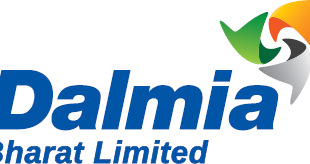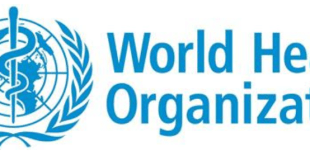New Delhi, 15 November 2022: Millions of residents of India’s National Capital Region are faced with a thick blanket of smog every winter. And every winter, the discussion veers around the practice of farmers in the surrounding northern provinces burning the stubbles of freshly-harvested rice to clear the ground for sowing wheat during Rabi season.
Multi-business conglomerate, ITC Limited has been working on a holistic farm-based programme in the Kapurthala district of Punjab that has consistently demonstrated a positive impact, making it a win-win for all stakeholders. On one hand, it has helped raise farmer incomes, productivity and reduced cultivation cost, whilst at the same time has addressed environment concerns by significantly reducing the hazardous practice of stubble burning.
ITC has recently entered into a collaboration with IIT Delhi’s Arun Duggal Centre of Excellence for Research in Climate Change and Air Pollution (CERCA) for development of a Geographic Information System (GIS) mapping tool. This tool will further strengthen and streamline the programme by helping track and monitor stubble burning practices. The aim is to identify areas where stubble burning is practiced and where it is not; prepare a detailed map based on the data and take further remedial action.
As part of its social investment intervention ‘ITC Mission Sunhera Kal’, ITC launched this farm-based programme in Kapurthala District in 2018 with the objective of enhancing farmer incomes in a manner that also helps manage crop residue effectively with minimal impact on environment. Since its launch in 46 villages across 18,760 acres, the intervention is now spread across 4 blocks of the District in over 465 villages across 1.83 lakh acres, benefitting over 15,900 farmers. The intervention has successfully demonstrated improvement in farmers’ income upto 25%. This climate smart programme has also led upto 25% water saving in paddy and wheat crops through adoption of Direct Seeding of Rice and in Zero tillage sowing in wheat respectively. Because of the programme, there was also no stubble burning in 89.7% of the targeted area. In the current year 2022-23, ITC has targeted to cover 2 lakh acres of paddy area for its crop residue management programme.
Punjab, Haryana, Uttarakhand, and Western Uttar Pradesh constitute the majority of India’s rice-wheat cropping system, which is spread over 10 million hectares. yielding ~50 million tons of paddy residue annually.
The practice of burning crop waste as a phenomenon took shape only in the nineties when farmers switched from harvesting rice crop by hand to using combine harvesters that always left a 15-30 centimetres stubble on the ground. The short time gap of only three-weeks between the harvesting of rice and planting of wheat, made it almost impossible for the stalk to decompose naturally, and hence the practice of stubble burning. Farmers have been reluctant to switch over to alternative practices because of a fear that any delay in wheat sowing would reduce its production.
Despite incentives and also threats of fines, the majority of farmers continue with the practice of stubble burning. The effort demanded a change of approach. ITC, having empowered 4 million farmers during its decades long journey in Indian agriculture, decided to engage with all stakeholders to address the issue holistically.
After conducting extensive research on ground, ITC found that farmers were reluctant to shift to more sustainable practices mainly because they believed that burning the stalks is the cheapest and fastest way to begin the next crop season and that any alternative will disrupt their livelihoods.
ITC’s Approach: Collaboration, Technology adoption, Training & Engagement:
ITC was keen to make a difference and find a sustainable and equitable solution to this critical problem affecting both the environment and livelihoods. Having worked with a large number of stakeholders and farmer-beneficiaries across the country for its pioneering sustainability interventions spanning water stewardship, forestry, biodiversity, climate smart and sustainable agriculture, ITC believed that the programme’s success lied in convincing farmers of its tangible economic benefits instead of focussing only on the environmental challenges. The Company’s extensive consultation with several leading farmers, scientists, NGOs and government agencies revealed that farmers would change over to alternative practices only if the solution offered them superior value in terms of yield and productivity improvement compared to stubble burning.
Having done the feasibility study, ITC embarked on an integrated programme with three objectives: improving farmer incomes, making available an extended window between paddy harvest and wheat sowing and using crop residue in an effective manner. Year-round engagement with farmers instead of only at the time of rice harvesting was critical to gain trust and confidence of farmers.
Two key technologies were introduced to solve the problem. Firstly, ITC introduced a Super Straw Management System that pulverises harvested straw to below 5 centimetres or about one-third the size of previous stubbles and spreads the residue on fields to enhance soil moisture and nutrients. Secondly, it introduced a Happy Seeder equipment to plant rows of wheat crop on the carpet of rice stubble.
To address initial apprehensions of farmers, ITC partnered with Agriculture Department, Krishi Vigyan Kendras and machinery owners to conduct extensive training programmes through Farmer Field Schools and other engagements. Whilst sharing details of the economics of the programme, ITC also focussed on ensuring timely availability of these machines.
The resources and knowledge gathered through the new practices helped formulate smart Package of Practices relating to the use of seed, water, nutrients whilst improving resilience to weather. The results were extremely encouraging. The direct seeding method in rice not only reduced water consumption, but also increased the time gap between rice harvest and wheat sowing by 15 days. Short duration varieties of wheat that provided better yields, also further mitigated the time pressure. Together, with the extended time window available, whilst gaining economically led to a positive situation of farmers not requiring to resort to stubble burning.
The incorporation of the GIS tool in collaboration with CERCA, IIT Delhi is expected to further strengthen ITC’s programme by providing an accurate mapping of stubble burning regions along with a robust documentation of the impact of practices in the field. This is likely to substantially enhance the scale and impact of the much-needed initiative, going forward.
 Newspatrolling.com News cum Content Syndication Portal Online
Newspatrolling.com News cum Content Syndication Portal Online





